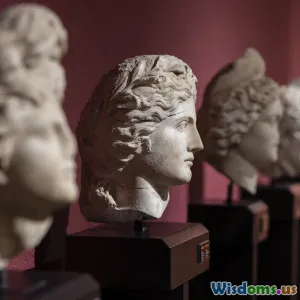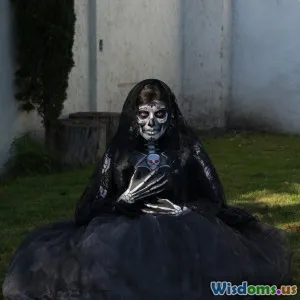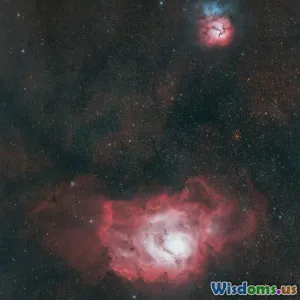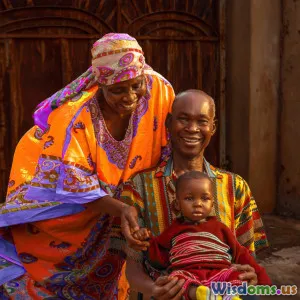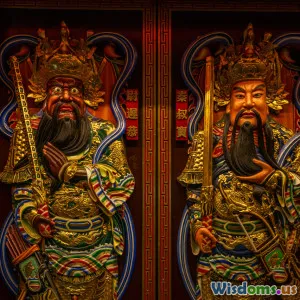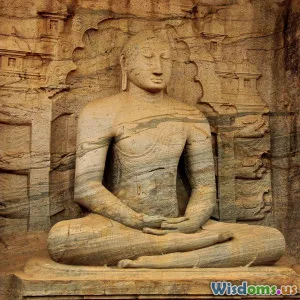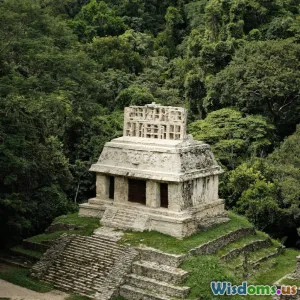
Breaking Down the Popol Vuh Creation Myth Step By Step
10 min read An in-depth exploration of the Popol Vuh creation myth, revealing its rich symbolism and cultural impact in steps. (0 Reviews)
Breaking Down the Popol Vuh Creation Myth Step By Step
The Popol Vuh, often hailed as a cornerstone of Mesoamerican literature, offers a profound window into the beliefs and worldview of the ancient Maya civilization. Unlike many Western creation stories, it blends rich symbolism, cosmology, and human origin myths into a narrative that reverberates with cultural significance even today. This article aims to unravel this enigmatic creation story, meticulously breaking it down step by step to deepen your understanding and appreciation.
Introduction: Why the Popol Vuh Matters
When we think of creation myths, stories like the Biblical Genesis often come to mind. However, the Popol Vuh stands out as a uniquely poetic and metaphorical account reflecting the spiritual values and environment of the Maya peoples. Written in the Kʼicheʼ language and later transcribed using Latin letters in the 16th century, it preserves a powerful oral tradition that blends mythology, history, and philosophy.
Understanding the Popol Vuh is not simply an academic exercise; it provides insight into how humanity grapples with fundamental questions such as: Where do we come from? Why are we here? What is our relationship with nature and the divine? These themes resonate beyond time and culture.
Step 1: The Primordial Silence and the Stillness of the Void
The Popol Vuh begins not with the earth or heavens as separate entities but with a vast emptiness—Tepeu and Gucumatz float in the dark, silent, and motionless expanse. This is a universe devoid of form, resembling the concept of chaos or the void present in many cosmogonies. Here, time and space have not yet begun.
This initial silence and stillness symbolize the spiritual state before existence: potentiality not yet realized. It prompts reflection on the mystery that precedes being. Anthropologist Dennis Tedlock notes, “The universe is not simply a blank slate; it is pregnant with creation itself.”
The Role of the Sky and Sea
According to Popol Vuh, the sky and the sea are the two dominant elements before land or life. With no earth beneath, the story highlights the cosmic duality and balance that shapes existence—light and dark, water and air.
Step 2: The Divine Word That Calls the World Into Being
The first act of creation is by the deities Tepeu and Gucumatz pronouncing spoken words—words suffused with creative power. This motif echoes the power of the word found in many cultures, from the Biblical “Let there be light” to the Hindu Vedic chanting.
Upon their divine utterance, things begin to take shape—the sky, earth, and waters separate. The earth is brought forth where none existed before. This demonstrates the Maya conception of speech as creation, emphasizing language and thought as central to existence.
Symbolism of Naming and Speaking
Naming is a sacred act, bringing reality into focus. It denotes authority over the created realm and reflects the deep bond between humans, words, and gods. For the Maya, this underscores their ritualistic practice of using sacred language to connect to the divine.
Step 3: The Emergence of the Earth and Its Creatures
Next, the earth rises from the deep waters and emerges as a floating island—this mirrors the Mesoamerican geographical experience surrounded by seas, lakes, and rivers. The earth is shaped like a turtle’s back, a common symbol representing the foundation of the world.
In this newly birthed world, mountains, valleys, and forests come into being. The Popol Vuh highlights the importance of the natural features of the landscape by including them in the narrative, linking sacred geography with mythology.
Creation of Animals
Following the introduction of the earth, animals are created: jaguars, birds, snakes. Yet, these creatures cannot speak, a crucial point indicating that they are incomplete or subordinate to humans. This detail highlights an early division between nature and humans, but also situates animals as essential but silent parts of the cosmic order.
Step 4: The Creation of the First Humans and Their Trials
The Popol Vuh recounts the creation of the first humans, an event steeped in trial and error. Initially, man was made from mud and wood but these versions failed—mud man crumbled and wood men lacked souls and hearts.
These failures emphasize the Maya view that humanity had to be crafted carefully, infused with spirit and balance to fulfill its cosmic role.
The Role of the Hero Twins
One of the most compelling sections of the Popol Vuh involves the hero twins, Hunahpu and Xbalanque. They play a pivotal role in challenging the underworld gods and establishing order.
Their adventures, including confronting the Lords of Xibalba (the Maya underworld), represent humanity’s struggle between life and death, knowledge and ignorance, order and chaos.
Through trials such as ball games and cunning tests, the twins exemplify perseverance and cleverness, virtues revered in the Maya culture.
Step 5: Human Emergence and Connection to the Divine
After several attempts, humans are finally created from maize dough, regarded as sacred throughout Mesoamerica. Maize was considered the divine crop, humanity’s birth material, symbolizing sustenance and life.
The Popol Vuh states, “They fashioned people of maize, who could speak and understand, who had minds and hearts.” This act acknowledges human uniqueness but also humanity’s dependence on cosmic forces.
Maize: The Sacred Life Source
Beyond a myth, maize reflected the agricultural backbone whose cycles structured Maya life. Its inclusion as humanity’s material reinforces the belief in harmony between humans and nature.
Step 6: The Moral and Cosmic Order
The creation story doesn’t end with the physical world’s formation but implicates a moral structure governing life. The Popol Vuh illustrates ideals of balance, reciprocity, respect for nature, and the dangers of hubris.
It underlines humans’ responsibilities—not dominion but stewardship of the earth, as partners within the cosmic order.
By tracing human origins to a sacred maize and connecting human fate to heroic acts, it connects individuals’ lives with spiritual purpose.
Real-World Impact and Cultural Insights
Beyond its storytelling power, the Popol Vuh has been vital in preserving indigenous Maya identity post-colonization. It is studied worldwide as a monumental piece of pre-Columbian literature, inspiring writers, historians, and cultural activists.
For example, Salvadoran author Miguel Ángel Asturias drew deeply from the Popol Vuh in his Nobel-winning work, showcasing its broad literary resonance.
Its ecological message—emphasizing harmony between humans and nature—is increasingly relevant in contemporary environmental discourse.
Conclusion: The Enduring Legacy of the Popol Vuh
The Popol Vuh surpasses being a simple myth; it is a profound narrative weaving cosmology, ethics, and cultural identity. Step by step, its creation myth reveals a universe that is alive, speaking, and filled with meaning—a testament to the Maya’s worldview that continues to inspire and teach.
By closely examining the stages—from the silent void, through divine speech, the shaping of earth and beings, to the forging of humans and heroes—it offers us not only a glimpse into ancient beliefs but also timeless reflections on existence and humanity’s place within it.
In embracing the Popol Vuh’s richness, we open ourselves to understanding a legacy that champions balance, reverence for nature, and the power of thoughtful creation.
References:
- Tedlock, Dennis. Popol Vuh: The Mayan Book of the Dawn of Life. Simon & Schuster, 1996.
- Christenson, Allen J. Popol Vuh: The Sacred Book of the Maya. University of Oklahoma Press, 2007.
- Roys, Ralph L. The Book of Chilam Balam of Chumayel. University of Oklahoma Press, 1967.
- Asturias, Miguel Ángel. Legends of Guatemala, notably inspired by the Popol Vuh.
Rate the Post
User Reviews
Popular Posts










